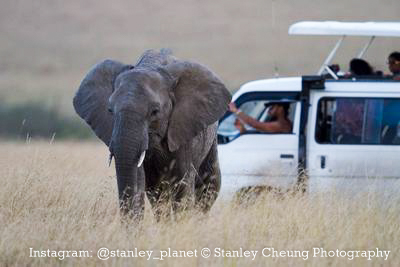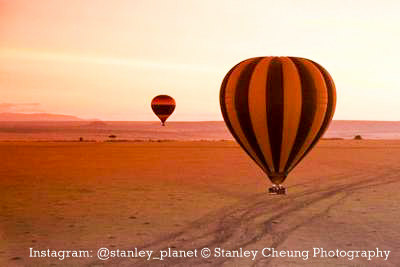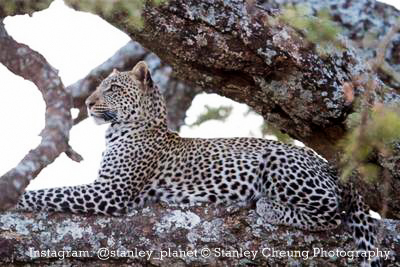Home > Destinations > Africa > Tanzania > About



Tanzania
坦桑尼亞
Tanzania, like Kenya,is Africa's visual jewel. It is a country of natural brilliance specitacular wildlife, and seductive white sandy beaches.
Apart from being the ideal bush and beach destination, you can witness the mighty herds of the Great Migration in the Serengeti. Tanzania and Zanzibar together offer a magnificent chance to visit the ancient towns, archaeological sites, and geological wonders.
Tanzania is bordered with:
North: Kenya and Uganda
West: Rwanda Burundi and the Democratic Republic of Congo,
South: Malawi, Zambia, and Mozambique
East: Indian Ocean.
Quick Fact:
- Captial City: Dodoma
- Language: Swahili and English
- There are over 10 mountains and hills in Tanzania. The highest mountain in Africa is called Mount Kilimanjaro (Highest 5,895m)
- The most common savannah regions include the Serengeti, Selous game reserve and The Ngorongoro Crater
- The Great Rift valley offers abundance of water and birdlife. Common lake regions include Lake Tanganyika, Lake Natron, Lake Manyara, Lake Tarangire and Lake Victoria.
- The East African Coast touches the Indian Ocean, thus ensuring year round warm waters and pristine beaches. Famous beach destinations in Tanzania include" Dar es Salaam, Zanzibar Archipelago, Mafia Island Bagamoyo and Pangani.
THE SERENGETI NATIONAL PARK
This is one of the World's greatest game sanctuaries.
The park ocvers 14,763 sq km of endless rolling plains, which reach up to the Kenyan border and extend almost to Lake Victoria. The park is teaming with stunning wildlife - it is thought that over 3 million large mammals roam the plains. In May or early June you can witness the annual migration of millions of zebra and wildebeest in search of water and forage as the season change.
Large herds of antelope of all sorts including: Patterson’s eland, Klipspringer, Dikdik, impala, Zebra, gazelles, water, bush and reed buck, topi, kongoni, cotton’s oribi, grey bush duiker, roan antelope buffalo, and wildebeest. Plus: lion, leopard, cheetah, hyena, bat eared fox, hunting dog and jackal. Smaller mammals: spring hare, porcupine, warthog, hyraxes, baboon, vervet monkey, colobus monkey, patas monkey, and mongooses. Larger mammals: giraffe, rhino, elephant, hippopotamus. Nearly 500 species of bird, including vultures, storks, flamingoes, martial and fish eagles, ostrich. Reptiles: crocodiles, a number of species of snakes and lizards.
THE NGORONGORO CRATER
It is the World's largest unbroken Volcanic Caldera and perhaps being the Eighth Wonder of the World!
The park is located between the Serengeti and Lake Manyara. It is home to the famous volcanic Ngorongoro crater which is the largest unbroken caldera in the world. The crater (610 metres deep and 260 km squared) is a microcosm of East African scenery and game and is usually visited on the way back from the Serengeti to Arusha. Scenic grandeur and stunning views are the hallmark of this wonder of the world. All the lodges are built high on the crater rim and afford amazing views over and into the crater – the perfect setting for a well deserved sundowner.
There are 25,000 larger animals within the crater itself, mostly zebra and wildebeest. However, this is undoubtedly the best place to see black rhino in Tanzania as well as prides of lion that include the magnificent black-maned males. There are lots of colourful flamingoes and a variety of other water birds around the soda lake on the crater floor. More than a 100 species of bird not found in the Serengeti have been found in the crater. Other game: leopard, cheetah, hyena, elephants, warthog, impala, buffalo, hartebeest, eland and lots of other members of the antelope family and smaller mammals of sorts.
ZANZIBAR AND PEMBA
The Spice island of Zanzibar lies off the coast of Tanzania in the Indian Ocean. It is famous for once being the commercial centre of East Africa and the last place to abolish the slave trade. Today it combines ancient Islamic ruins, noble Arabic houses with miles of white sandy palm fringed beaches and coves. The ocean offers warm clear blue waters, idyllic islands excellent reefs for snorkelling and diving, fantastic deep-sea fishing, water sports and of course delicious fresh fish. And if you thought that wasn’t enough, visiting the Spice plantations (cloves, cinnamon, nutmeg, vanilla, cardamom and others) or haggling for carvings in the Central Market is great fun too.
MOUNT KILIMANJARO
It is one of the Highest Mountains in the World.
Mount Kilimanjaro is located at the north/eastern tip of Tanzania. For the adventurous, a climb of Mount Kilimanjaro is a must taking you through the mists of equatorial jungle to reach the snows and breath-taking views from the summit.
It can be climbed at any time during the year. However, Christmas and New Year are usually fully booked and April, May and November is the rainy season.
TARANGIRE NATIONAL PARK
Tarangire National Park is located 120 km from Arusha south east of Manyara. This park has a particularly dense wildlife population between June – October. This national park is home to thousands of elephants, and in the dry season game congregates along the river having migrated from the Masai Mara. This park is symbolized by the Baobab tree, growing in open acacia woodland. Tarangire is an ornithologists paradise rich in birds of prey and an incredible diversity of avifauna.
Tarangire National park is popular for Large herds of antelope of all sorts including: eland, lesser kudu, Kongoni, impala, Zebra, gazelles, buffalo, wildebeest, leopard, elephant, rhino and lots of smaller mammals.
Tarangire National Park is an open Savannah grassland with a swampy southern part. the vegetation includes woodland,parkland, wetland, seasonal floodplain river valley and gentile rolling hills.
The park gets it’s name from the Tarangire River which flows across the park. it attracts animals that travel several kilometers to quench their thirst in its perennial waters during the dry season.
The river bank lined with tall trees is an ideal habitat for a variety of birds. The park boasts a recorded 550 species of which the most commonly spotted are the yellow-collared Lovebird, Goliath Heron, Helmeted Guinea Fowl, White-bellied Go-away Bird, Hamerkop, Baleleur, Kori Bustard, Long-toed Lapwing, brown Parrot, Madagascar Bee-eater, Owls, Weavers, Kingfisher, Doves, Ostrich, Plovers, Sandpipers, Francolins Ducks and African Hooppoe
LAKE MANYARA
A Lake in the Great Rift Valley known for its tree-climbing lions
This beautiful park is at the base of the Great Rift Valley escarpment and comprises of forest, woodland, grasslands, and swamps. Since it is only 130KM from Arusha it may be visited as a day excursion.
Wildlife
Gazelles; impala; buffalo; wildebeest; the famous tree climbing lion; hyaena; baboon; giraffe; hippopotamus; and a great number of smaller mammals; 350 species of bird, storks and flamingoes.
ARUSHA NATIONAL PARK
This is one of the most beautiful parks in Tanzania and located 32 KM from Arusha (see map). Aside from the abundance of wildlife, fauna and flora there are three spectacular features; momella lakes, Meru Crater, and the Ngurdoto Crater. Both Mount Kilimanjaro and Mount Meru can be seen from the park when the weather is fine.
Wildlife
Antelope of all sorts; buffalo; leopard; hyaena; baboon; colobus monkey; giraffe; rhino; elephant; hippopotamus
THE RUFIJI RIVER
The Rufiji River lies entirely within the African nation of Tanzania. The river is formed by the convergence of the Kilombero and Luwegu rivers. It is approximately 600 km (375 mi) long, with its source in southwestern Tanzania and its mouth on the Indian Ocean at a point between Mafia Island called Mafia Channel. Its principal tributary is the Great Ruaha River. It is navigable for about 100 km (60 mi).
The Rufiji is about 200 km (120 mi) south of Dar-es-Salaam. The river’s delta contains the largest mangrove forest in the world.
The largest river in Tanzania with its spectacular array of plants and animals can be devided into four distinct parts.
Starting up river where rivers like the Luwegu and Kilombero (Ulanga) form to become the Rufiji River at the Shuguli falls. Then flowing North-East through the Selous Game Reserve to be joined by the Ruaha River, entering its second part when entering the Stieglers Gorge.
Here the Rufiji River makes his path through a 8 km narrow canyon, only approximatly 100 metres wide. In this gorge the river heads down over rapids known as “Pangani Rapids”, Conman’s Foil and Ropeway Rapids.
Finally flowing out into a wide area where it splits into many different channels and lakes known as Lake Tagalala, Lake Manze, Lake Nzelekela, Lake Siwandu and Lake Mzizimia, the actual photographic tourist game viewing area within the Selous Game Reserve.
All this time the river has been flowing through an area only inhabitat by plants, animals and birds, with the occasional tourists doing a boat safari.
As soon as the river leaves the Selous Game Reserve, the first village shows up on its banks, with fishing canoes and village farms. The Rufiji is free of swamps such as the Zambezi which prevent human appreciation of its waters from shore, and thus the Rufiji is also free from extensive mosquito breeding in this area, and many a village is prettily situated on his banks facing the river.
The river passes Utete, the starting point up river of larger canoes or boats, having travelled roughly half of its journey towards its delta from the Selous Game Reserve, and supporting grasslands, woodland, forests, swamps and thirteen other permanent lakes.
Finally it reaches its delta which is the home to the largest mangrove forest on the eastern coast of Africa- a massive 53,000 hectares.
In the delta is also the last resting place of the “Konigsberg”, a German Cruiser sunk there by the British during World War 1 after sustaining damage and trying to fight off a superior force of attackers, it has however sunk even deeper into the Rufiji sands & silt, obscuring it entirely from view. Also the “Somali’s” last resting place is in the delta, being a coal ship to the “Konigsberg” and also being sunk there.
THE SELOUS GAME RESERVE IN THE SOUTH
This is a must for the Nature lover!
Beiing the largest game reserve in Africa – 4 times the size of the Serengeti . It possesses a diverse landscape from hot volcanic springs, sporadic lakes, channels from the Great Rhaha and Rufiji rivers. Walking is permitted (with an armed ranger) which with over 350 species of bird and 2,000 species of plants to see makes this the most heavenly sanctuary to explore.
Wildlife
Selous is famous for its elephant, hippopotamus and rhino (although now few remain). The park has a broad range of game: buffalo – the largest population in Africa; Nyasaland gnu; brindled gnu; hartebeest; Greater Kudu; sable antelope; eland; reedbuck; bushbuck; waterbuck; warthog; zebras; giraffe; and wildebeest. Also: lion, leopard, the spotted hyeana and hunting dog are in abundance; cheetah are rare; there are over 350 species of bird and reptiles such as crocodiles and various snakes and lizards.
RUAHA NATIONAL PARK
This is one of Tanzania’s least accessible parks, and as result it is totally untouched and remains one of the most exciting game reserves (almost as large as the Serengeti). It is a birdwatcher’s paradise as there are 350 species of bird that are not found in northern Tanzania and as the river runs through spectacular gorges and majestic trees it is specially appealing to photographers. The best months to go to see game are from July to November.
Wildlife
Most of the big game: elephant; buffalo; hippos; crocodiles; lion; cheetah; leopard; wild dog and lots of antelope; Greater and Lesser Kudu; roan and sable antelope; and Grants gazelles.
ALL INFORMATION ABOVE ARE PROVIDED FOR YOUR REFERENCE. THEY ARE SUBJECT TO CHANGE WITHOUT GIVING PRIOR NOTICE.
|
|---|
Newsletter Subscription: 訂閱最新旅遊資訊
Site Map · Privacy Policy 私隱政策(只附英文版)
© 2020 Exotic-Holidays.hk · All Rights Reserved.
![]()